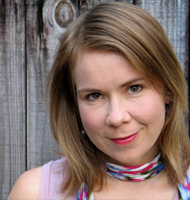INTERVIEW: A.J. Betts

This is your second novel for young adults. What was easier, and what was harder this time around?
I wish my second novel had been easier! Both were challenging and rewarding in different ways.
Planning my second novel was a little easier as I’d picked up a few tricks with Shutterspeed. I had a clearer sense of narrative structure, with less distracting side stories.
The first draft of Wavelength was finished in less than a year (Shutterspeed took five years) so I needed another six or more drafts to get a genuine grasp of the characters and their inner monologues. This meant the final few months of editing were pretty intense.
How do you approach writing a novel, as opposed to writing short stories and poems?
The ideas for my novels, stories and poems all hit me in the same way, but some continue ‘growing’ – arms, legs, tentacles – in my mind. After some months of letting them grow, I realise the big ones want to be novels.
When I’m writing a story or poem, I’m existing in the moment and taking more risks. When I’m working on a novel, there’s a sense of each scene being a part of a longer narrative in my head, so there’s a heightened consciousness of character motivations, relationships, and ramifications of his/her actions. I’m aware that each scene is a piece of a larger puzzle, and while it can dazzle in its own way, it needs a purpose and I have to make it fit.
What sparked the story for Wavelength ?
Ninety-nine per cent of my writing is sparked by the real world. Often it’s a moment I’ve witnessed that engages my curiosity, prompting me to consider what it feels like to be another person. Wavelength is the one per cent exception. It was an experiment. I’d heard of authors who simply sit at a computer and write whatever comes first to their minds, and so I tried it. What came out first was a muffin; in particular my love of a good muffin. The ‘perfect’ muffin. I may have been hungry.
Thus I began writing, constructing a conflict around said muffin. After two pages of spontaneous writing I’d created Oliver and Susan, and a novel was already taking shape in my mind. At this stage my planning instinct kicked in and I immediately mapped out the key stories and ideas. I then went about writing the draft in a more methodical fashion. Of course, the story became about bigger things – pressure, Year Twelve, relationships – but it started with a muffin.
At the beginning of the novel, the main character, Oliver, is overwhelmed by the pressures of final year exams and deciding his future. How much of an issue is this for high school students?
It’s easy for adults to romanticise their adolescence as carefree ‘wonder years’, but the reality can be far from that. Personally, I’d hate to go back to that time in my life. So much self-absorption. So much angst! I never really felt comfortable in my own skin. On top of this there was a huge workload and many (often conflicting) expectations of teachers, parents and peers. How was I supposed to know, at seventeen, what to do with the rest of my life?
I think it’s unrealistic to expect teenagers to answer this question. Many adults in their twenties, thirties, fifties and eighties are still wondering. There is no ‘one’ decision that the rest of our lives depends on – there are many. Sometimes students feel overwhelmed by the magnitude of choosing a career, with which I empathise.
As a teacher, I love to see students challenging themselves and reaching their potential, but there’s a risk of stress becoming a negative by-product of their efforts. Competition can be a positive motivating force, but it can also be damaging. So can the ideal of perfection. Pressure can manifest itself in many ways.
Where did you draw inspiration from for the characters of the Sunny Haven Recreation and Leisure Centre?
The leisure centre’s staff members were such fun to create. There’s Jim, the hardworking, down-to-earth pool operator; Emma the kiosk attendant; Darian the front counter employee; and Hemi the maintenance man. These characters were drawn from a range of sources ranging from strangers I’ve observed at swimming pools to friends of mine. Each of them has their own passions and each is loveable yet flawed in some way.
The patrons of the Sunny Haven Recreation and Leisure Centre were also a joy to write. As senior citizens from the nearby retirement village, they were created to provide colour and contrast to Oliver’s life in Perth. Inspired primarily by my grandfather, Buddy, who has Alzheimer’s Disease, I wanted to share my love and respect for older people, and pay homage to the stories and wisdom they possess. There is much we can all learn from them. These characters have interesting and dynamic lives. They are optimistic with a strong sense of community. I drew on many people I’ve met – Gwendoline was modelled on a lady I met in a car park!
Through the challenges Oliver faces in the novel, his outlook on life changes. What is the most important lesson that he learns?
Oliver learns that ‘life is long’ and that his goals don’t all need to be achieved right now. Life isn’t a race; no-one’s timing. Initially, Oliver had been working towards short-term goals without thinking of happiness or long-term fulfilment. But by the end of the novel, Oliver begins to feel relieved of the pressures that had burdened him. He starts to consider possible career paths based on interests and passion, rather than his peers’ aspirations or society’s expectations. There is time, he discovers, for many things: for dreaming, for making mistakes, and for family and friends. Life is happening right now, all around him, and the possibilities are infinite.



